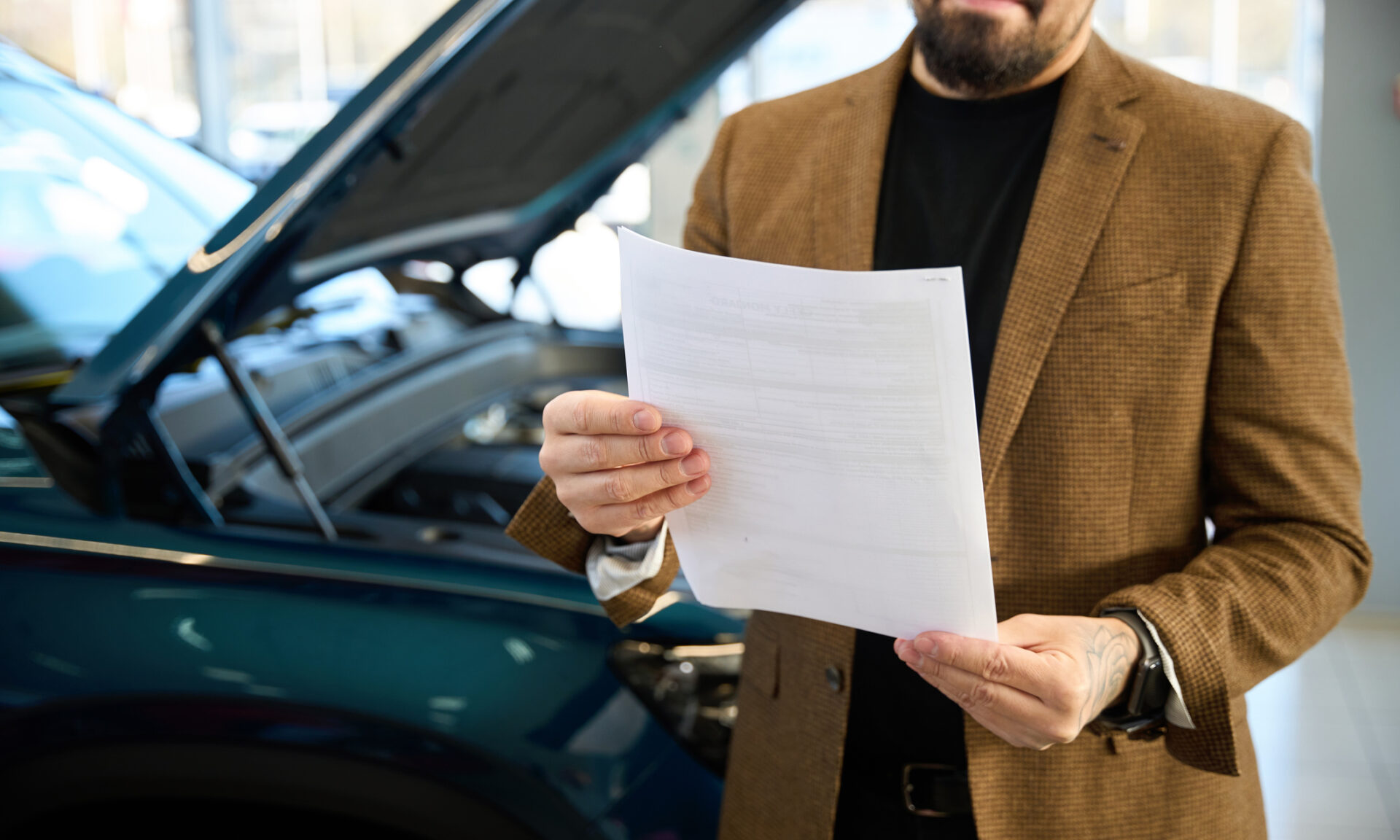8 Ways to Check a Car’s History
How to go beyond a basic vehicle report, to learn more about the history of a car.

Many, or all, of the products featured on this page are from our advertising partners who compensate us when you take certain actions on our website or click to take an action on their website. However, this does not influence our evaluations. Our opinions are our own. Here is a list of our partners and here's how we make money.
When buying a used vehicle, getting a standard vehicle history report is an important first step, but it may not tell the whole story. Sometimes reports omit information about a car’s history, so you may want to dig deeper.
For a more thorough investigation, consider these eight additional ways of uncovering a car’s past.
1. Get a professional inspection
A pre-purchase inspection by a qualified mechanic is essential for detecting hidden damage or mechanical problems.
- A dealership or private seller may say the car has already been inspected, but insist on taking it to a third-party, independent mechanic of your choice. The one exception might be if you buy a certified pre-owned (CPO) car, which is inspected and comes with a manufacturer-backed warranty. You can always ask for a copy of a CPO car’s inspection report.
- The cost of a used-car inspection is usually several hundred dollars, an upfront cost that could save you thousands of dollars in future repairs.
2. Run a free VIN check
A vehicle identification number (VIN) is the unique 17-character code assigned to every vehicle. It can be found on a car’s registration or the driver’s side dashboard. You will need the VIN to get a vehicle history report as well as a free VIN check.
- Use the VinCheck Search provided by the National Insurance Crime Bureau (NICB), a not-for-profit that fights insurance fraud and crime. At no cost, this tool searches insurance records to see if a car has been reported stolen and never recovered. It also detects whether an insurance company has declared a vehicle to be a total loss.
- Other businesses advertise free VIN checks, but be cautious. Some are scams, so it’s best to stick with reputable sources, like the NICB. Also, be aware that a VIN check is not a full car history report.
3. Track the car’s title and registration history
Vehicle history reports do provide past titling information, such as changes in ownership. And they should indicate whether a car has a clean or branded title — indicating problems such as flood damage.
However, a vehicle’s title history may not be complete and accurate, either intentionally or due to titling differences by state. Here are some ways to verify title information that you have.
- Use the National Motor Vehicle Title Information System (NMVTIS) as a resource. The NMVTIS maintains the only central database in the United States that consolidates specific information from state motor vehicle titling agencies, insurance carriers, auto recyclers, junk and salvage yards. You can buy an NMVTIS-approved vehicle history report, which is shorter than other types of history reports and focuses specifically on indicators of fraud and theft, such as discrepancies in odometer readings or hidden vehicle damage .
- Contact the Department of Motor Vehicles (DMV). State DMVs may have additional information in their vehicle title records, so consider accessing and verifying state title records where the vehicle was registered. The NMVTIS has a list explaining how to request DMV vehicle records by state.
4. Inspect maintenance records
Reviewing service and maintenance records can help verify how well a car was cared for, so ask the previous owner or dealership for these records, if possible. Also, use other sources.
- Check with manufacturer service centers. If the previous owner primarily used the service center at a franchised dealership (e.g. Toyota, Honda, Ford), any dealership of the same brand may have access to the car’s service history.
- Contact independent mechanic shops. The service records you obtain may show work was done by an independent shop. You can contact that business to see if they will share their perspective about the car.
5. Learn more about accidents
Car damage that was covered by insurance, or reported to police, should show up on a vehicle history report. However, the level of detail will vary, and you may want to learn more.
- Ask for accident details. If possible, ask the previous owner or car dealer what exactly happened to the car.
- Request documentation of repairs done. This can give you an idea of damage severity. It may also provide the name of the body shop that handled repairs, so you can follow up. Inquire about any warranty on repairs.
- Look for undisclosed damage. When you have the car inspected, ask them to look for signs of damage that might not have been reported to insurance or the police.
Flood-damaged cars often appear on the used market after major storms or hurricanes. They may be sent to a different part of the country, where flood damage isn’t top of mind for car buyers.
- Check for signs of moisture, mold or rust. Look under carpets, inside the trunk, beneath seats, inside door panels and under the dashboard.
- Use a mechanic trained to detect water damage. Ask if they have equipment to inspect in hard-to-reach areas.
- Be alert to warning signs. A musty smell or new upholstery in an older car can be a red flag.
7. Inspect for odometer fraud
Odometer fraud involves rolling back the mileage on a car to make it appear newer and less used. The National Highway Traffic Safety Administration (NHTSA) estimates that more than 450,000 vehicles are sold annually with false odometer readings .
- Compare various mileage records. Look for discrepancies between the odometer, service records, oil change sticker and title history.
- Look for signs of odometer tampering. Have a mechanic assess whether the odometer reading is realistic for the amount of wear and tear throughout the car.
8. Search for open recalls
When a car manufacturer or the NHTSA determines a certain vehicle model has a safety-related defect, a recall is issued to repair the problem. It’s up to the car’s owner to return the car for the repair, which they may not always do.
- Visit the NHTSA’s recall website. Enter the vehicle’s VIN to find any unresolved recalls. You can usually find details about open recalls on the car manufacturer’s website.
- Address open recalls before buying. On occasion, recalls are made without the ability to get repairs right away. To avoid this situation, ask the dealership or seller to make the repair before you buy the car. Alternatively, you can check with the manufacturer to ensure repairs can be made immediately after you purchase the vehicle.
You may not want or need to take all of these steps, but you can pursue those that make sense for the vehicle you’re interested in. Going the extra mile in your research can save you from costly surprises down the road.
Vehicle history reports are important, but you can do more to confirm what’s in the report or to find missing information. By checking title records, verifying maintenance history, looking for hidden damage and conducting a thorough inspection, you can increase your chances of finding the most reliable car.
Article sources
NerdWallet writers are subject matter authorities who use primary,
trustworthy sources to inform their work, including peer-reviewed
studies, government websites, academic research and interviews with
industry experts. All content is fact-checked for accuracy, timeliness
and relevance. You can learn more about NerdWallet's high
standards for journalism by reading our
editorial guidelines.
- 1. National Motor Vehicle Title Information System. For Consumers. Accessed Feb 11, 2025.
- 2. National Highway Traffic Safety Administration. Odometer Fraud. Accessed Feb 11, 2025.
More like this
Related articles






